Birds are one of the most unique and diverse creatures on Earth. They inhabit many different habitats in the city of Dakhla, Morocco, including wetlands, grasslands, deserts, and savannas.
These birds can come in many different sizes, shapes, and colors, and they are a beautiful and important part of the ecosystem.
The birds of Dakhla provide important services like pollination, pest control, and seed dispersal, and they help to maintain a healthy balance in nature.
In addition, birds provide a great source of entertainment for birdwatchers, as they can be observed in their natural habitats. Whether you’re a bird enthusiast or just looking to appreciate nature, the birds of Dakhla are sure to leave you in awe.
1. Greater Flamingo
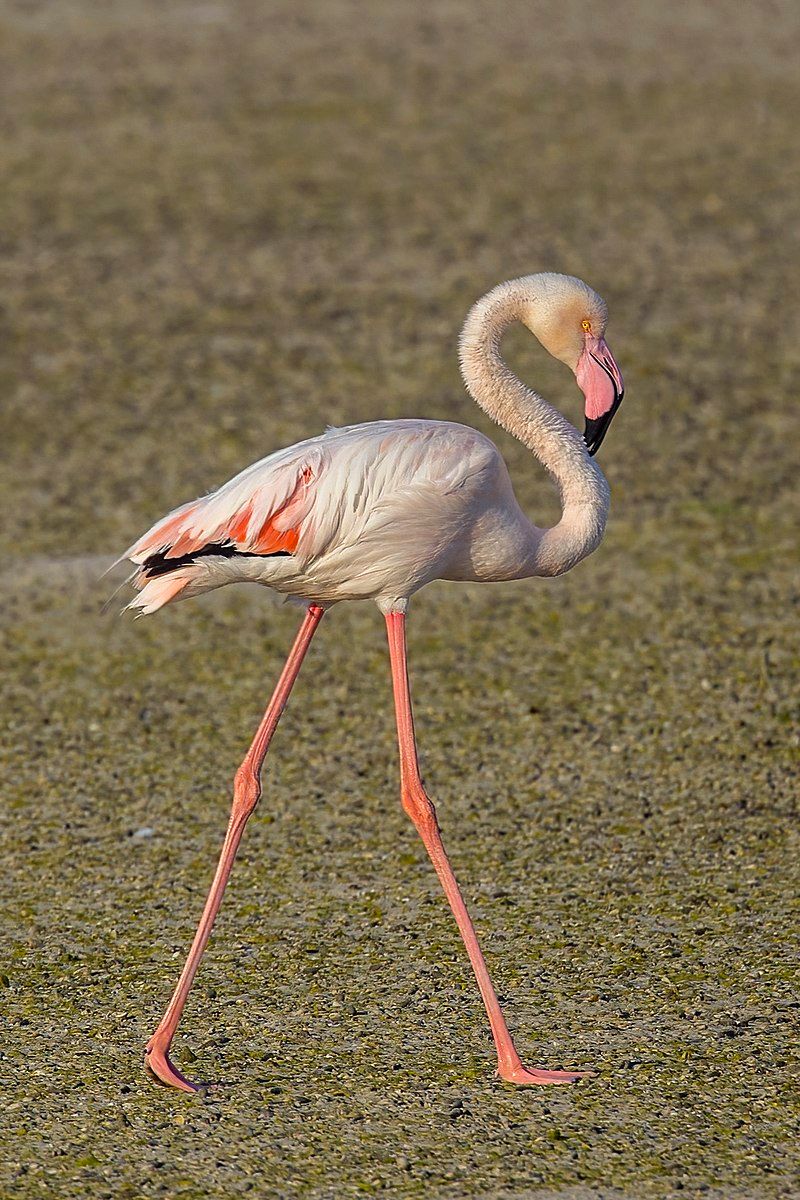
The Greater Flamingo is the largest and most widespread species of the flamingo family.
These majestic birds can be found in a variety of habitats across the Old World, from Northern and Sub-Saharan Africa to the Indian Subcontinent, Middle East, Levant, Persian Gulf, Gulf of Aden, Red Sea, and Mediterranean countries of Southern Europe.
They are well adapted to their wide range, utilizing wetlands, estuaries, and coastlines for their feeding and breeding grounds. In the wild, Greater Flamingos are found in flocks of up to several hundred birds.
Their diet consists mainly of small invertebrates such as brine shrimp, mollusks, and aquatic insects, which they filter from the water with their specialized beaks.
They also feed on some plant material, including algae and other aquatic vegetation. The Greater Flamingo is a very distinctive bird, with its long neck and legs, bright pink feathers, and black-tipped wings. They can reach heights of up to 1.2 meters and can weigh up to 4.5 kg.
Their long legs and webbed feet allow them to wade in shallow water in search of food. The Greater Flamingo is a truly remarkable bird, and its wide distribution across the Old World is a testament to its adaptability and resilience.
Its presence is a reminder of the beauty and diversity of the natural world.
| Kingdom | Animalia |
| Phylum | Chordata |
| Class | Aves |
| Order | Phoenicopteriformes |
| Family | Phoenicopteridae |
| Genus | Phoenicopterus |
| Species | P. roseus |
2. Black Stork
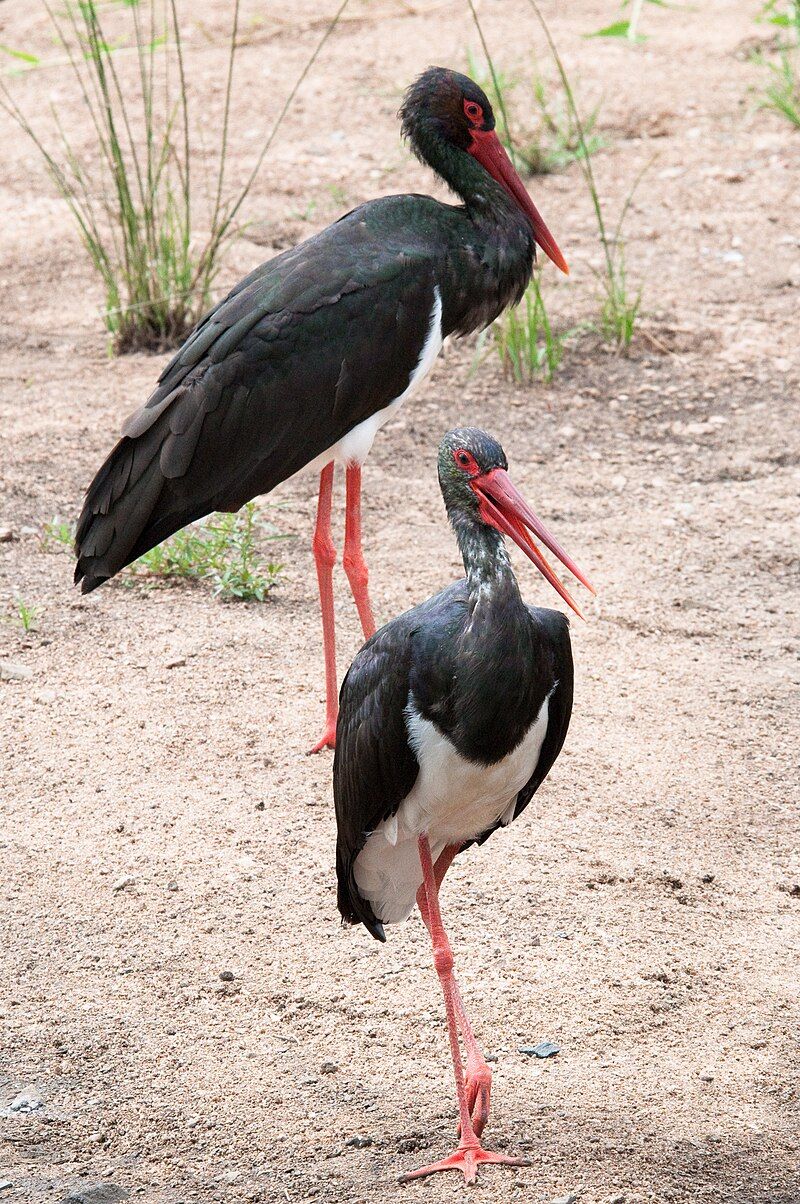
The black stork is a species of large bird that is part of the stork family Ciconiidae. It is native to parts of Europe, Asia, and Africa.
The bird was first officially described by Carl Linnaeus in the 10th edition of his Systema Naturae, which is a catalog of living organisms published in 1758. The black stork is a large bird with a wingspan of up to 1.5 meters.
It has black feathers on its wings and back, and white feathers on its chest and belly. Its bill, legs, and eyes are black too. It typically lives in wetlands, grasslands, and forests and feeds on a variety of small mammals, amphibians, and fish.
It nests in trees or on cliffs and lays up to five eggs in a clutch. The black stork is an endangered species, with its population having declined drastically due to habitat destruction, hunting, and other human activities.
Conservation efforts are being made to protect this species and help its numbers recover.
| Kingdom | Animalia |
| Phylum | Chordata |
| Class | Aves |
| Order | Ciconiiformes |
| Family | Ciconiidae |
| Genus | Ciconia |
| Species | C. nigra |
3. Sanderling
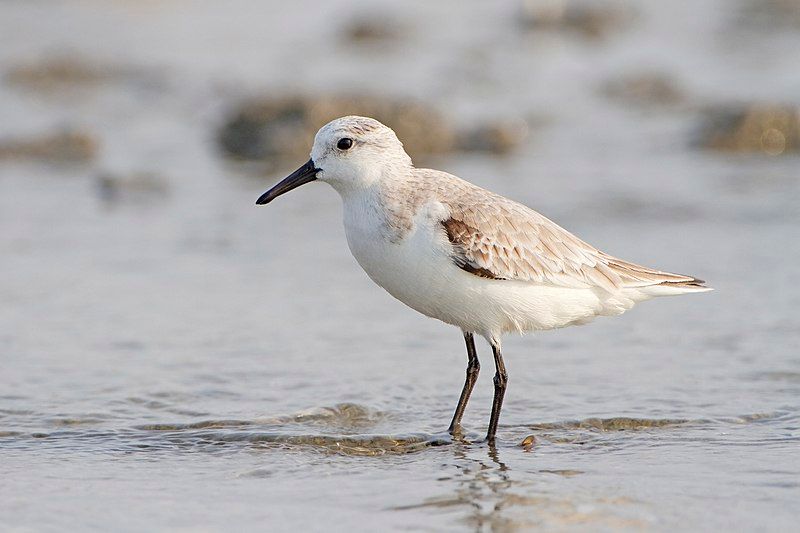
The sanderling is a small species of wading bird, with a name that originates from the Old English term ‘sand-yrðling’, which translates to ‘sand-plowman’.
The genus of this bird is derived from Ancient Greek, where kalidris or skalidris is the term used by Aristotle when referring to grey-colored birds that are typically found near the shoreline.
The specific name of the sanderling, alba, is Latin for ‘white’, indicating the color of this species of bird. The sanderling is found around the world, from the Arctic down to the tropics, and is a migratory species that moves from the Arctic to the tropics during the winter.
It can usually be found in large flocks, as they search for food on the shoreline. The sanderling is a key indicator species, alerting us to the health of the coastal environment.
| Kingdom | Animalia |
| Phylum | Chordata |
| Class | Aves |
| Order | Charadriiformes |
| Family | Scolopacidae |
| Genus | Calidris |
| Species | C. alba |
4. Kelp Gull
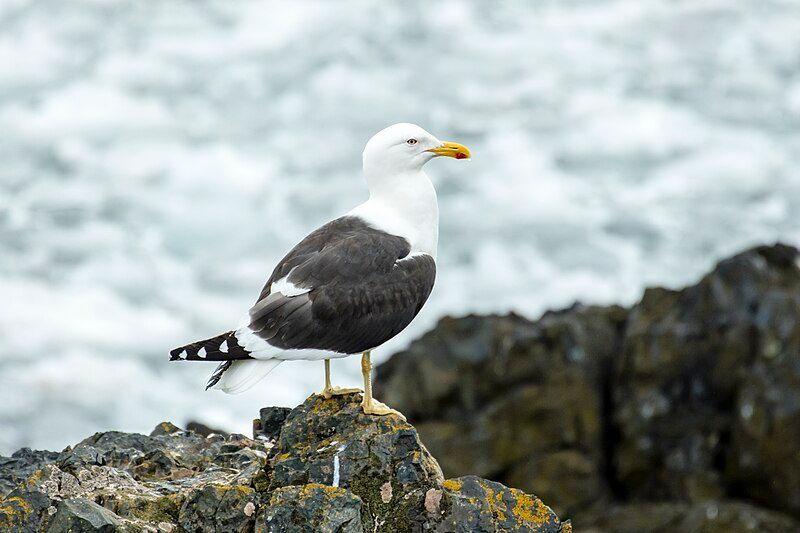
The kelp gull, also known as the Dominican gull, is a species of gull that is found in the Southern Hemisphere. It breeds in coastal regions and on islands in South America, parts of Australia, and New Zealand. It is divided into two subspecies: the nominate subspecies L. d.
Dominicans which is found around South America, parts of Australia, and New Zealand; and L. d. vetula which is found around Southern Africa.
These two subspecies of the kelp gull have slightly different physical characteristics, but overall they are similar to each other. The kelp gull is a medium-sized gull, usually measuring between 42-48 cm in length.
It has a white head and neck, with a white breast and greyish-brown back. Its wings are greyish-white and the tail is white. It has a yellow bill with a black tip and yellow legs.
The plumage of the kelp gull can vary depending on the region it is found in, but overall it is a fairly uniform species. The kelp gull is an opportunistic feeder, and its diet consists of a variety of items such as small fish, insects, and invertebrates.
It is also known to scavenge rubbish and other items that are found in its habitat. This species of gull is known to nest in colonies, usually on cliffs or in rocky areas.
It usually lays two to three eggs in a single clutch. Overall, the kelp gull is a species that is found in the Southern Hemisphere and is divided into two subspecies. It is a medium-sized gull with a white head and neck, a white breast, and a greyish-brown back.
It feeds on a variety of items and nests in colonies on cliffs or rocky areas.
| Kingdom | Animalia |
| Phylum | Chordata |
| Class | Aves |
| Order | Charadriiformes |
| Family | Laridae |
| Genus | Larus |
| Species | L. dominicanus |
5. Spotted Redshank
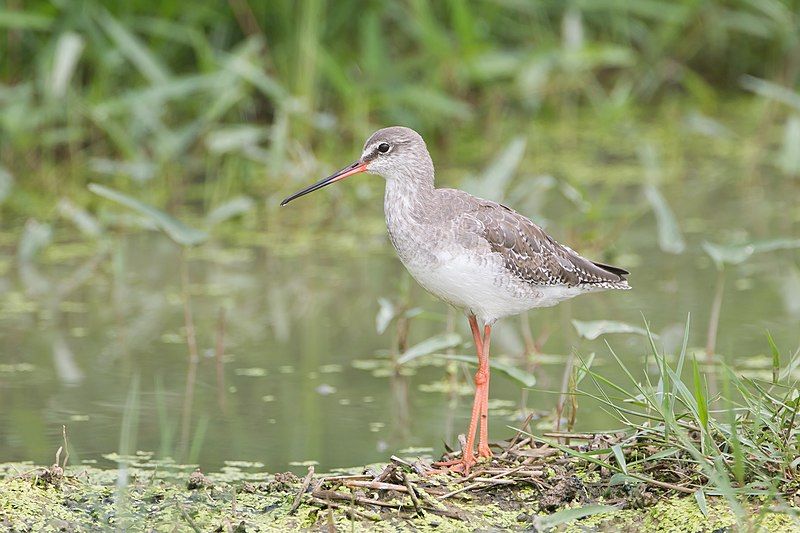
The spotted redshank is a type of water bird within the Scolopacidae family. This family includes a variety of bird species, such as sandpipers, dunlins, yellowlegs, and snipes.
The spotted redshank is part of the Tringa genus, which originates from the Neo-Latin term given to the green sandpiper by Aldrovandus in 1599. The term is derived from the Ancient Greek word trungas, which was used to describe a type of wading bird.
This bird was described as being the size of a thrush, having a white rump, and bobbing its tail when wading for food. This description was mentioned by the ancient Greek philosopher Aristotle.
| Kingdom | Animalia |
| Phylum | Chordata |
| Class | Aves |
| Order | Charadriiformes |
| Family | Scolopacidae |
| Genus | Tringa |
| Species | T. erythropus |
6. Glossy Ibis
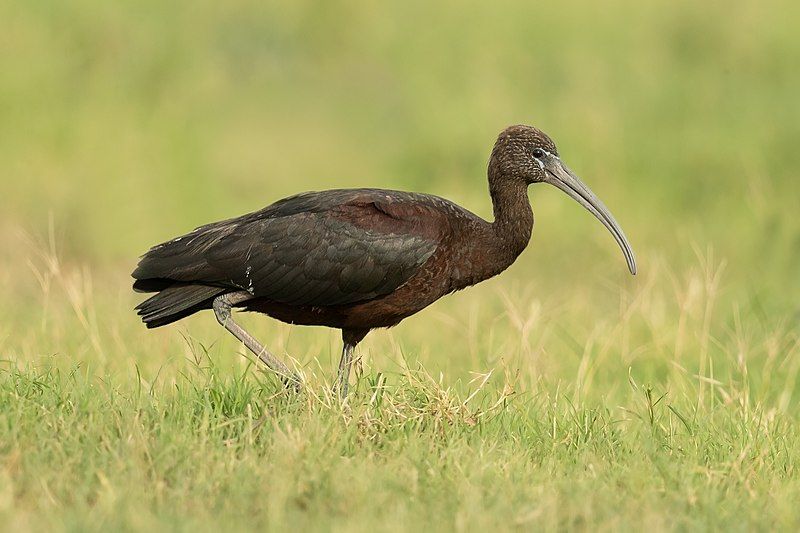
The glossy ibis is a species of water bird from the order Pelecaniformes and the family Threskiornithidae. The scientific name for this bird comes from Ancient Greek and Latin, where the words “plegados” and “falcis” mean “sickle”.
This refers to the unique shape of the glossy ibis’ bill, which is curved like a sickle. This distinctive shape is used to forage for food in shallow water, as the ibis can quickly and accurately snatch up small prey.
The glossy ibis is found in many different habitats, such as salt marshes, mudflats, freshwater wetlands, and mangrove swamps. It has a wide distribution, occurring across North, Central, and South America, as well as in Europe, Africa, and parts of Asia.
| Kingdom | Animalia |
| Phylum | Chordata |
| Class | Aves |
| Order | Pelecaniformes |
| Family | Threskiornithidae |
| Genus | Plegadis |
| Species | P. falcinellus |
7. Black-headed Gull
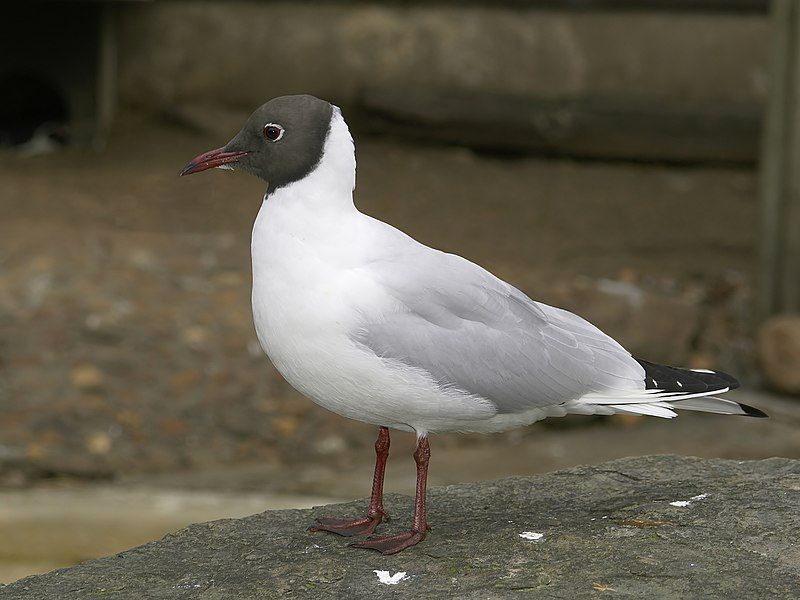
The black-headed gull is a species of small seabird commonly found in the Palearctic region. This includes Europe, a large portion of Asia, and the coastal eastern regions of Canada.
Most of the species migrate seasonally, flying southward during the winter and returning to the Palearctic during the summer months. However, some of the birds stay in the westernmost areas of Europe where the climate is relatively milder.
This species is an important part of the local ecosystems, providing numerous benefits to the environment. For instance, black-headed gulls are known to be scavengers, helping to keep the coastlines and waterways clean.
They are also important predators, helping to control the populations of certain fish and other marine organisms.
| Kingdom | Animalia |
| Phylum | Chordata |
| Class | Aves |
| Order | Charadriiformes |
| Family | Laridae |
| Genus | Chroicocephalus |
| Species | C. ridibundus |
8. Eremalauda
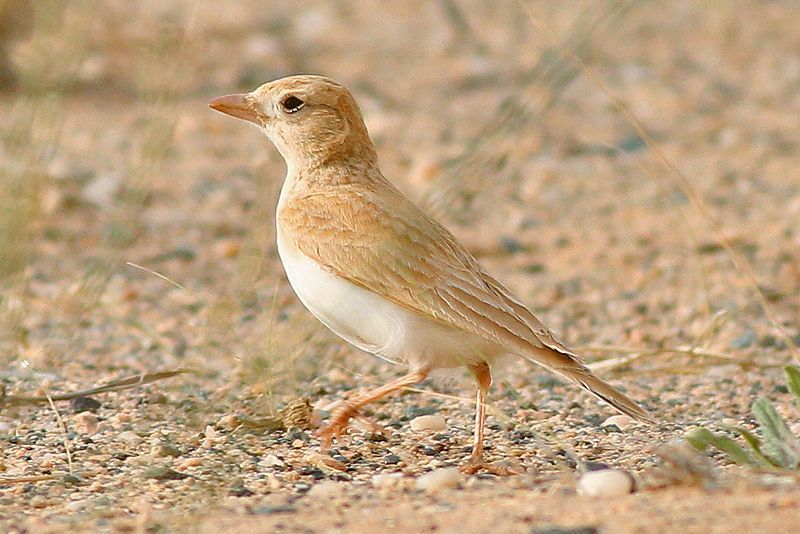
Dunn’s lark is a species of small passerine bird belonging to the lark family. It is a desert-dwelling bird that inhabits the Sahara desert, a massive desert in the northern region of Africa.
This species is known to reside across a large range of the Sahara, from Mauritania in the west to Central Sudan in the east.
It is a species that is adapted to living in the dry, arid climate of the desert and is able to forage for food and shelter in the limited resources of the desert environment.
Dunn’s lark is a small species, with a length of about four inches and a weight of around twenty-five grams. Its wings are short and rounded, while its tail is short and pointed. Its plumage is typically a mix of grey and brown, with dark markings on its head and neck.
Dunn’s lark feeds on insects, seeds, and other small invertebrates, and is typically seen foraging on the ground in small groups. The breeding season of this species is usually between April and June, during which time they build their nests in sandy soil or among rocks.
Dunn’s lark is considered to be a species of least concern by the IUCN, however, their population numbers are declining due to habitat loss and fragmentation.
| Kingdom | Animalia |
| Phylum | Chordata |
| Class | Aves |
| Order | Passeriformes |
| Family | Alaudidae |
| Genus | Eremalauda |
| Species | E. dunni |
9. White Stork
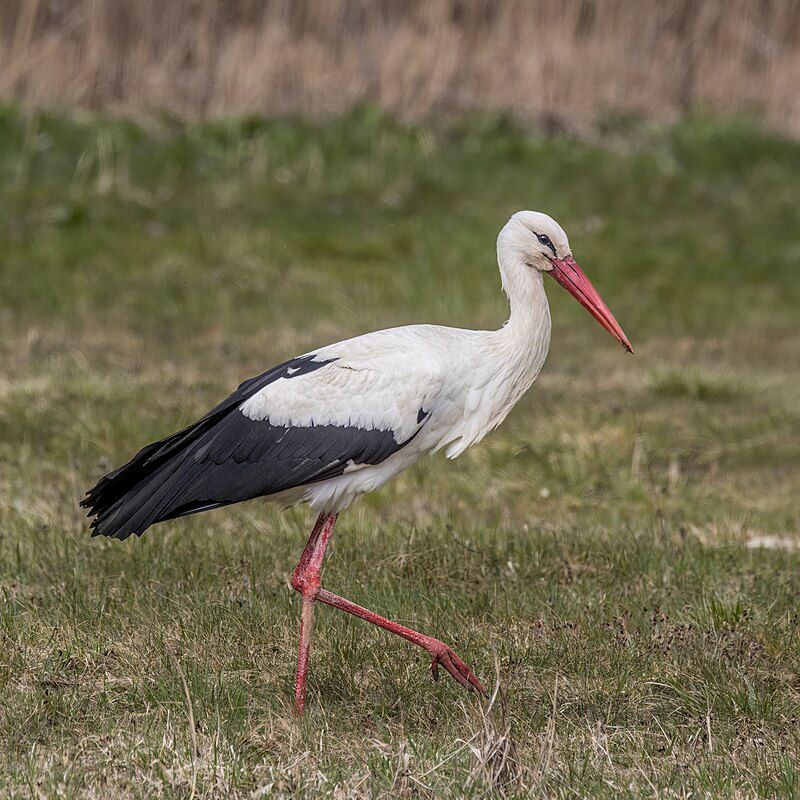
The white stork is a large bird that belongs to the Ciconiidae family of storks. It has a white plumage with black on the wings and long, red legs and beak.
The average size of an adult white stork is between 100–115 cm from beak tip to end of tail, and its wingspan usually measures between 155–215 cm. This bird is an impressive sight with its long, slender body and wings that soar through the sky.
Its bright red beak and legs stand out against its white feathers, and its size can easily be seen from a distance. The white stork is a majestic bird that is often a symbol of good luck and prosperity.
| Kingdom | Animalia |
| Phylum | Chordata |
| Class | Aves |
| Order | Ciconiiformes |
| Family | Ciconiidae |
| Genus | Ciconia |
| Species | C. ciconia |
10. Audouin’s Gull
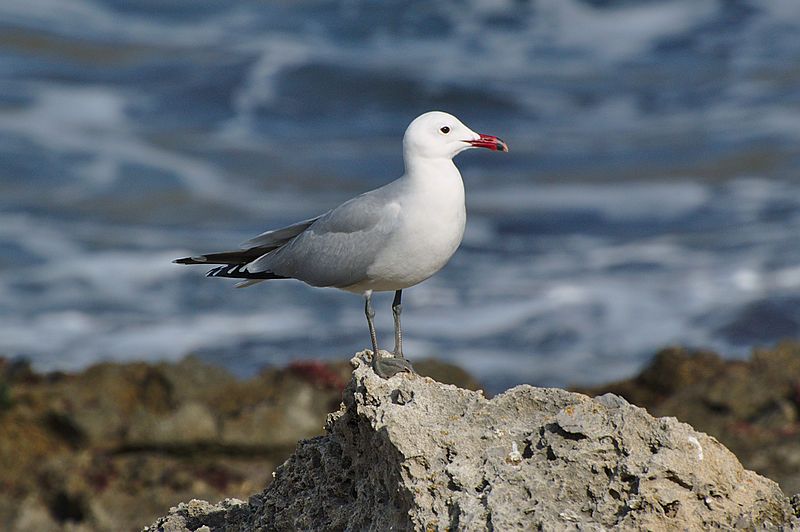
Audouin’s gull is a species of large gull that is native to the Mediterranean Sea, the western coast of Saharan Africa, and the Iberian Peninsula.
It belongs to the genus Ictheoetos, which is derived from the Ancient Greek words ikhthus, meaning “fish”, and aetos, meaning “eagle”.
The species was named after the French naturalist Jean Victoire Audouin, hence the English name Audouin’s gull. Audouin’s gull is a large species, with an adult length of about 20 inches and a wingspan of almost 4 feet.
They are easily identifiable by their black hoods and backs, white bellies, and gray wings. They feed mainly on small fish, crustaceans, and insects, which they catch near shore or sometimes even by wading in shallow water.
They are also known to scavenge on offal and garbage. Audouin’s gulls are known to form large flocks, often containing thousands of individuals, which they use for protection from predators. They are monogamous, and pairs will mate for life.
Breeding begins in late spring and eggs are usually laid in late May or early June. The eggs are incubated for a period of about a month before the chicks hatch.
The chicks are able to fly within a few months and reach sexual maturity at 2 years old. Overall, Audouin’s gull is an interesting species, with its unique habitat and beautiful plumage.
It is important to protect its breeding grounds and habitats so that it can continue to thrive in the Mediterranean region.
| Kingdom | Animalia |
| Phylum | Chordata |
| Class | Aves |
| Order | Charadriiformes |
| Family | Laridae |
| Genus | Ichthyaetus |
| Species | I. audouinii |
11. Sandwich Tern
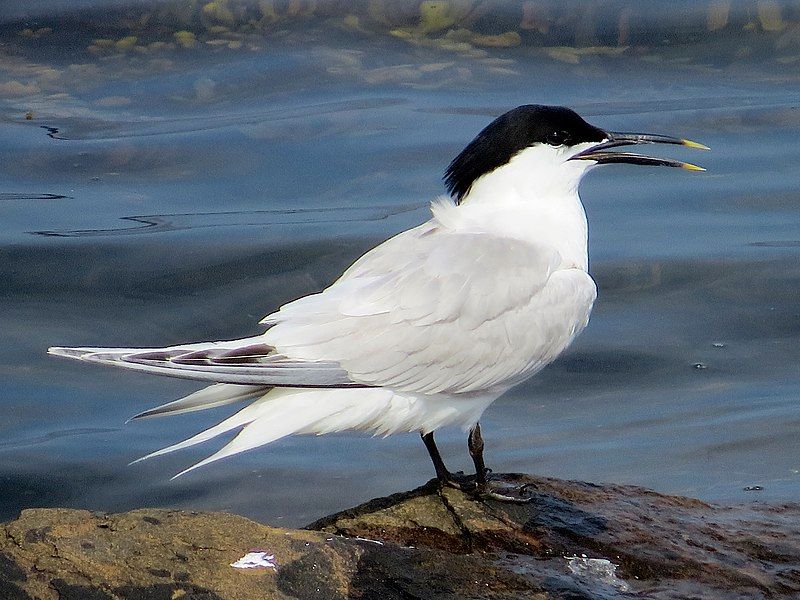
The Sandwich Tern is a species of seabird that is part of the Laridae family. It is closely related to several other species of terns, including the lesser crested tern, Chinese crested tern, Cabot’s tern, and elegant tern.
In fact, the Sandwich tern has been observed to interbreed with the lesser crested tern, indicating that the two species are closely related.
This interbreeding behavior has been documented in a number of different areas, including South Africa, the Mediterranean, and the Canary Islands. The Sandwich tern is a migratory species that can be found in the northern hemisphere during the summer months and in the southern hemisphere during the winter months.
They have a distinct black cap and white wings, and they can often be seen near the shoreline, foraging for small fish.
They usually live in colonies, and they are known to be quite vocal, making loud chirping sounds. Overall, the Sandwich tern is an interesting species of seabird that is closely related to several other species of terns.
They are known to migrate regularly, and they have been observed to interbreed with the lesser crested tern, indicating a close genetic relationship. They are a beautiful species and can be seen near the shorelines, foraging for food and making loud chirping sounds.
| Kingdom | Animalia |
| Phylum | Chordata |
| Class | Aves |
| Order | Charadriiformes |
| Family | Laridae |
| Genus | Thalasseus |
| Species | T. sandvicensis |
12. Slender-billed Gull
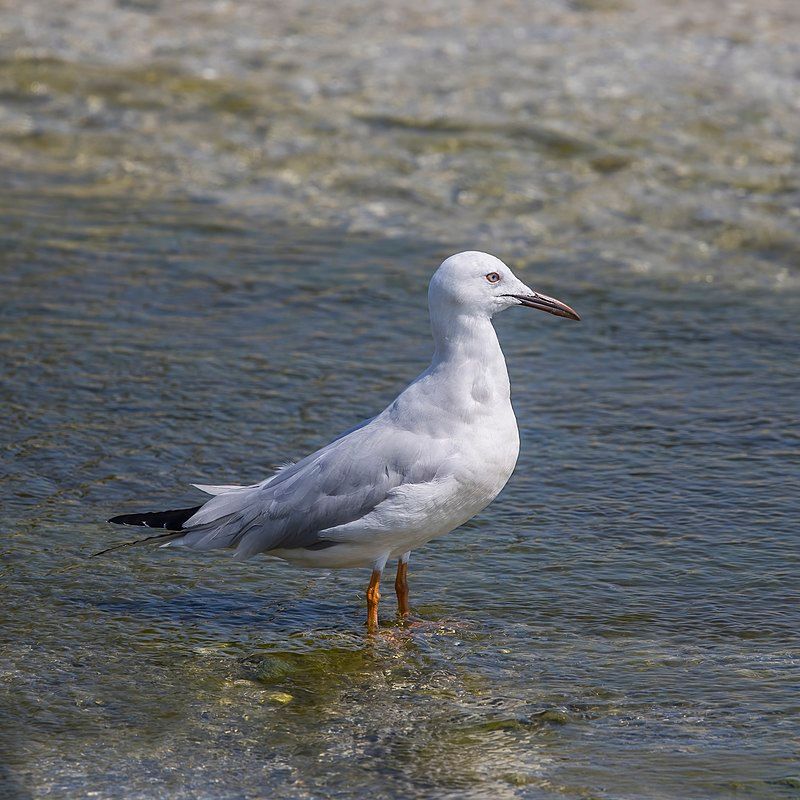
The Slender-billed Gull is a medium-sized bird of the family Laridae that can be found in a few areas of the world. Its breeding range is limited to certain parts of the Mediterranean and the northern parts of the western Indian Ocean.
The majority of this species is migratory, relocating to warmer regions when the seasons change.
This is why its wintering range extends from North Africa all the way to India. This species is believed to have colonized the Mediterranean from the Black Sea and Caspian Sea areas during the 19th century.
It can be found in a variety of habitats, such as coastal lagoons, islands, mudflats, and sometimes even inland lakes.
Its diet is mainly composed of insects, crustaceans, and molluscs, which it searches for in shallow waters. The Slender-billed Gull has a distinctive appearance, with its slender bill being one of its key features. Its plumage is mostly white, with a pale grey back and wings.
The legs are yellowish-orange and the eyes are yellow. The juveniles are slightly darker in color. This species is classified as Near Threatened by the IUCN Red List due to its declining population and range.
This is mainly due to the destruction of its habitats and the introduction of new predators in its range. Conservationists are working to protect this species and its habitats, in order to ensure its long-term survival in the wild.
| Kingdom | Animalia |
| Phylum | Chordata |
| Class | Aves |
| Order | Charadriiformes |
| Family | Laridae |
| Genus | Chroicocephalus |
| Species | C. genei |
13. Rock Pigeon
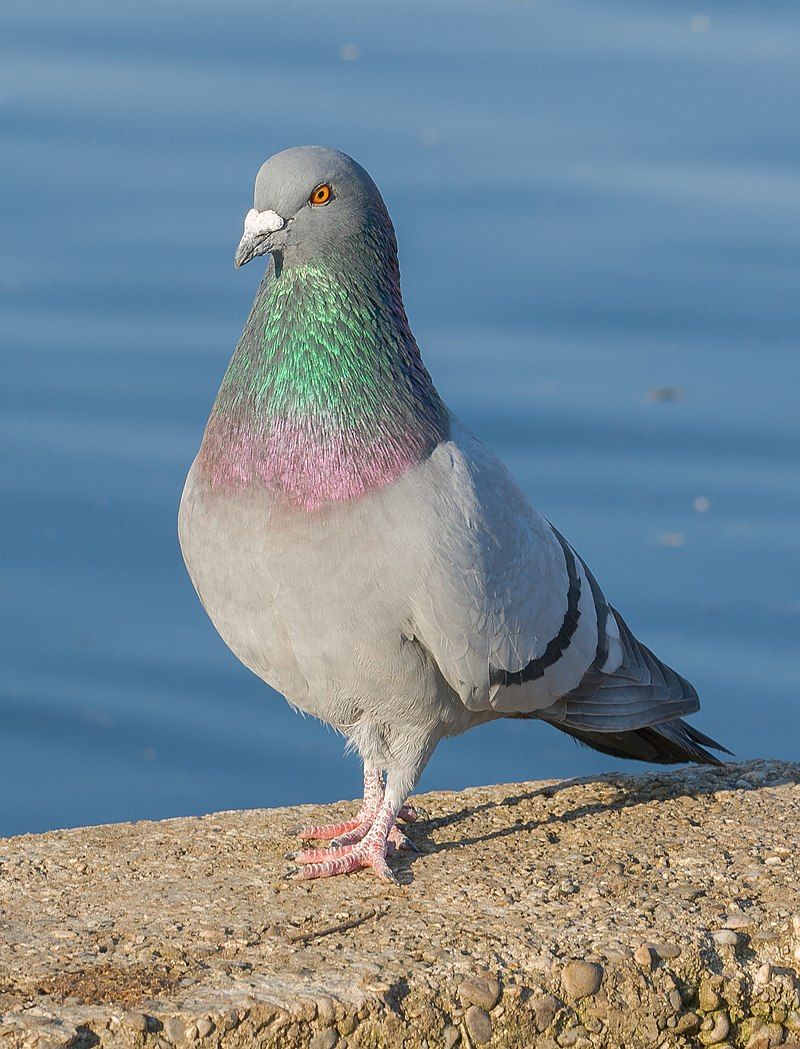
The rock dove, rock pigeon, or common pigeon is a species of bird belonging to the family Columbidae. It is also referred to as simply a “pigeon”. This species is the ancestor of the domestic pigeon, which is the pigeon breed kept as pets and used for various purposes.
As a result of domestic pigeons escaping and living in the wild, the population of feral pigeons has significantly increased. These feral pigeons can be found living in a variety of habitats all over the world.
They are commonly seen living in cities and towns, where they can find food and shelter.
| Kingdom | Animalia |
| Phylum | Chordata |
| Class | Aves |
| Order | Columbiformes |
| Family | Columbidae |
| Genus | Columba |
| Species | C. livia |
14. Marbled Teal
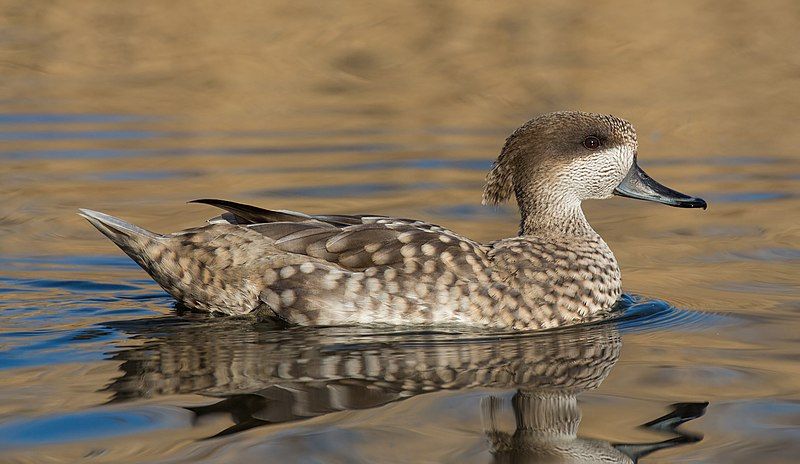
The marbled duck, also known as the marbled teal, is a species of duck native to parts of Europe, Africa, and Asia. Its scientific name, Marmaronetta angustirostris, reflects the distinct physical features of the duck.
The name is derived from Greek and Latin, with “marmaros” meaning marbled and “netta” meaning duck in Greek, and “angustus” meaning narrow or small, and “-rostris” meaning billed in Latin.
The marbled duck is a medium-sized species of duck, which can be identified by its distinct marbled pattern of dark and light colors on its feathers. Its bill is also quite narrow in comparison to other duck species.
The marbled duck inhabits wetland areas, and its diet typically consists of snails, aquatic insects, and vegetation.
| Kingdom | Animalia |
| Phylum | Chordata |
| Class | Aves |
| Order | Anseriformes |
| Family | Anatidae |
| Genus | Marmaronetta |
| Species | M. angustirostris |
15. Bearded Vulture
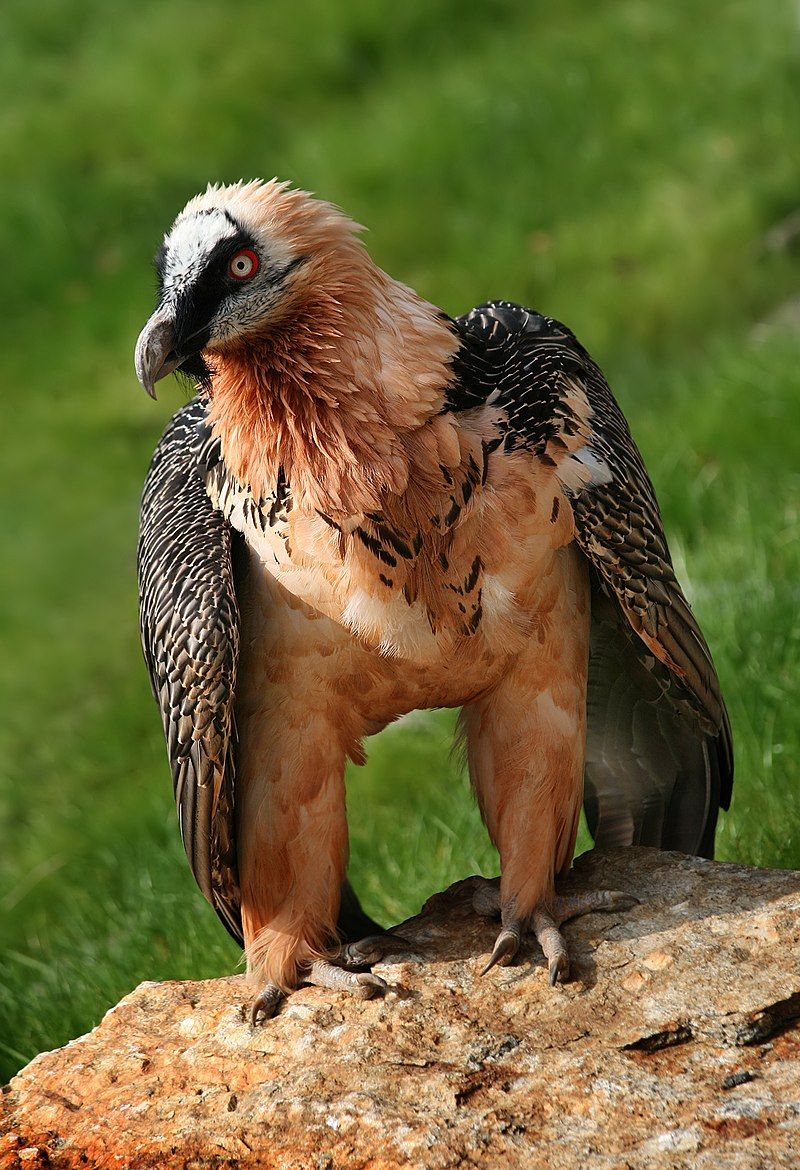
The Bearded Vulture, also known as the Lammergeier and Ossifrage, is a very large bird of prey belonging to the Accipitridae family. It is the only member of the genus Gypaetus.
Historically, it was thought to be an Old World vulture, but recent studies have revealed that it is actually more closely related to the Egyptian Vulture than any other species of vulture. The Bearded Vulture is a magnificent and powerful bird.
It has a wingspan of up to 8.2 feet and a weight of up to 11 pounds, making it one of the largest birds of prey in the world. Its distinctive black and white feather pattern makes it easily recognizable.
Its diet consists mainly of carrion, but it will also take live prey when the opportunity arises. The Bearded Vulture has an interesting lifestyle and behavior. It typically nests on cliff faces, making it difficult to observe in the wild.
It is a social species, with pairs often seen soaring in the sky together. It will also use its beak to crack open bones, which is why it is sometimes known as the “bone breaker”. The Bearded Vulture is an important species that helps to keep the environment healthy.
By feeding on carrion, it helps to reduce the spread of disease and keeps the environment clean. It is also an important indicator species, helping to alert us to changes in the environment. The Bearded Vulture is an amazing bird with a unique place in our world.
Its size, beauty, and behavior make it a truly remarkable species.
| Kingdom | Animalia |
| Phylum | Chordata |
| Class | Aves |
| Order | Accipitriformes |
| Family | Accipitridae |
| Genus | Gypaetus |
| Species | G. barbatus |
16. Lesser Spotted Eagle
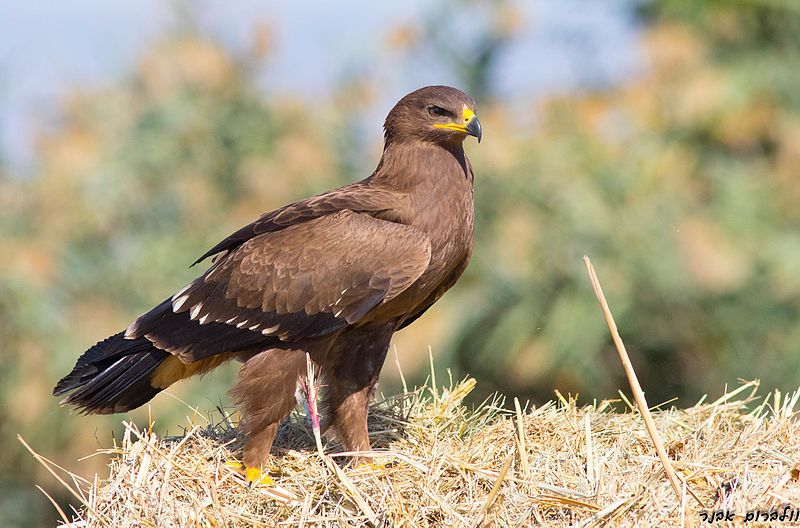
The lesser spotted eagle is a large bird of prey native to Eastern Europe. It belongs to the Accipitridae family, which contains all the typical eagles. This eagle is characterized by its large size and powerful wings, which allow it to soar high in the sky.
Its diet consists mainly of other birds, small mammals, and fish, which it captures with its sharp talons and powerful beak. The lesser spotted eagle is an impressive sight when it is in flight, and its white and brown feathers are distinctive.
It is an important species in the Eastern European ecosystem, and its population is threatened by habitat destruction and illegal hunting. Conservation efforts are needed to ensure that this magnificent species will remain a part of the environment for many more generations.
| Kingdom | Animalia |
| Phylum | Chordata |
| Class | Aves |
| Order | Accipitriformes |
| Family | Accipitridae |
| Genus | Clanga |
| Species | C. pomarina |
17. Black-crowned Sparrow-lark
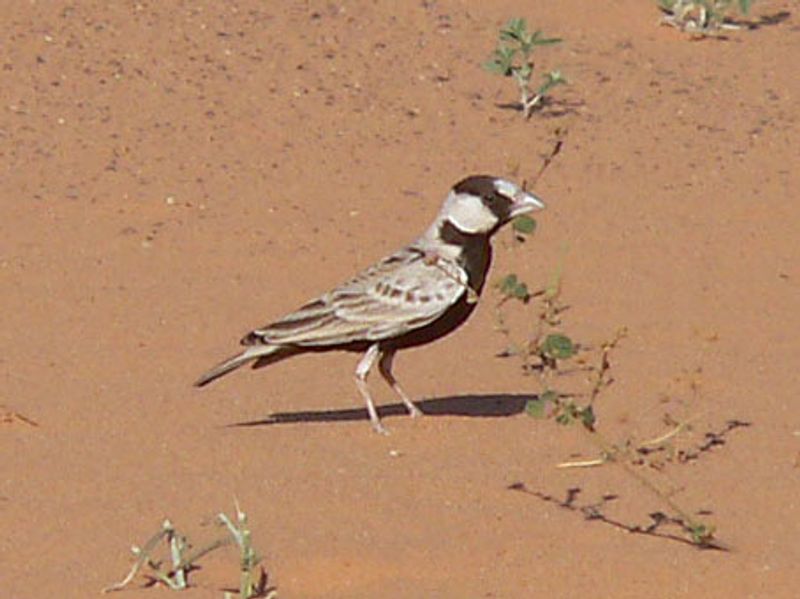
The black-crowned sparrow lark is a species of lark belonging to the family Alaudidae. It is widely distributed across vast swathes of northern Africa, from Mauritania to the Middle East and up to northwestern India.
This species of lark prefers a dry savanna as its natural habitat. It is well adapted to this environment, having strong legs and wings for flying short distances, and a diet consisting of mostly insects and other small invertebrates.
The black-crowned sparrow-lark has a black crown and a white throat, with the rest of its body covered by warm brown feathers. Its call is a loud trill, often heard at dawn and dusk.
This species is generally quite common across its range, however, habitat loss due to human activities such as overgrazing, cultivation, and urbanization can be a major threat.
The black-crowned sparrow-lark plays an important role in its ecosystem, acting as an important seed disperser and providing food for other animals, so it is important that its habitat be preserved.
| Kingdom | Animalia |
| Phylum | Chordata |
| Class | Aves |
| Order | Passeriformes |
| Family | Alaudidae |
| Genus | Eremopterix |
| Species | E. nigriceps |
Conclusion
Birds in Dakhla are a diverse and unique group of species that play a vital role in the local ecosystem and provide a variety of benefits to the local community.
They are a source of food, beauty, and entertainment, and their presence is an important part of the local culture. The protection and conservation of these birds are essential in order to maintain the health of the local environment and the community.